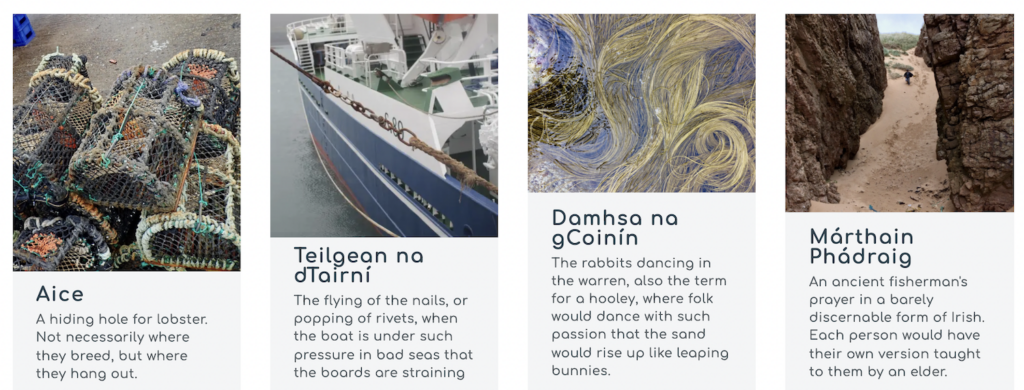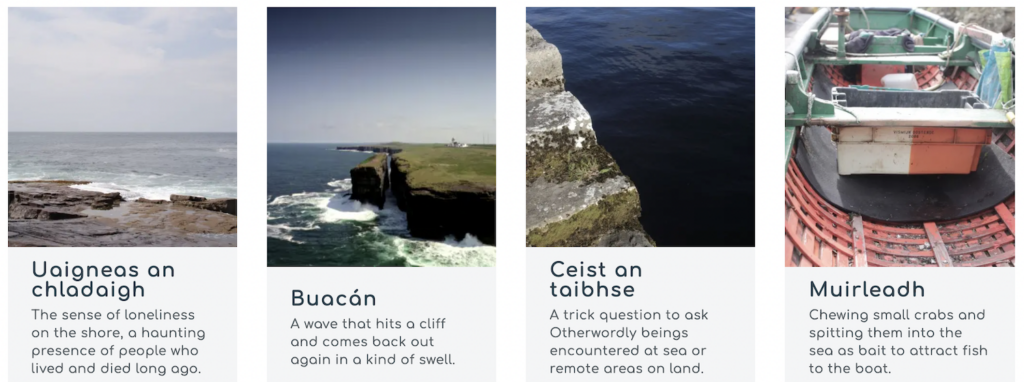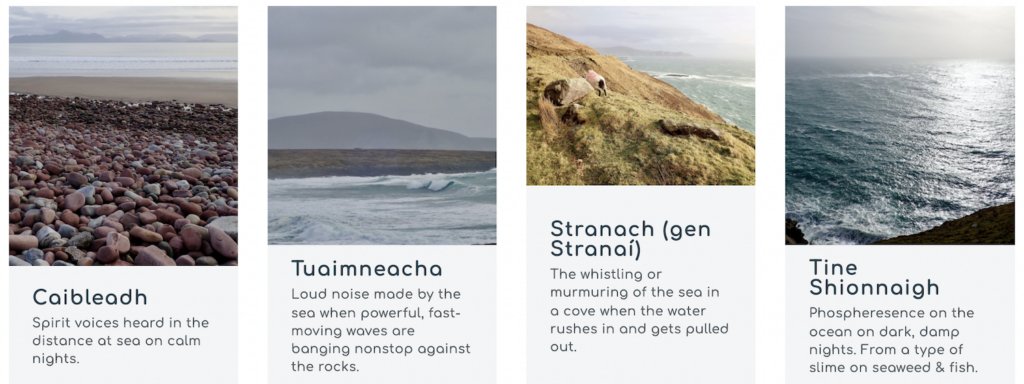Language
There is evidence that in 2021, according to new data released by the language app Duolingo, Irish is the fastest growing language, with over 1 million people actively learning Irish every week on it. It is also the number one language being learned in Ireland.
There are 1.10 million active users worldwide learning Irish on Duolingo, with a quarter of them (23%) in Ireland (36% USA, 11% UK).
1.10 million learning Irish on Duolingo → 23% Ireland – 36% USA – 11% UK
This is a new trend: even today, many Irish people don’t speak the native language as a result of the country’s long history of British rule from 1169-1922. They don’t speak Irish because for many years they did not speak it. This led to it falling into almost total disuse for a long time.
According to the latest Central Statistics Office census, a total of almost 2 million people in the country speak Irish (39.8% of the Irish population), but of these, only about 70,000 speak it on a daily basis (2% of the total population).
In 2005, fearing that it would disappear, UNESCO added Irish to the Atlas of the World’s Languages in Danger; in the meanwhile, Irish was recognised as an official language by the European Union.
In the language service industry, there is currently a shortage of Irish interpreters and translators. According to Politico, Brexit has made the situation more urgent: “With Ireland likely to suffer more than any other EU country after the UK has departed, it is important to avoid marginalising the Gaeilgeoir (Irish-speaking) community”.
Spoken for over 2,000 years, Irish is one of the oldest living languages in Europe. Its history includes a protracted campaign of repression starting with the 12th-century Anglo-Norman invasion.
Today, something is changing.
In Ireland..
The desire to know their native language and delve deeper into their roots is growing, most of all in the younger generation.At the same time, the Irish government has implemented a 20-year strategy with the objective of increasing the number of daily speakers of Irish from the current level of approximately 70,000 to 250,000.
It is no coincidence that this revival is happening today. The next generation is figuring out its national identity following the economic crash after the 2008-2009 crisis. There is finally a growing love for Irish, with people no longer tied up in the colonial mindset. It is fair to say that the longest-lasting effects of colonisation have not been the ones linked to economic and political domination, but the ones linked to the psychological strategy of degrading native languages.
..As well as in Northern Ireland
The reintroduction of the Irish language is highly wanted, even if the aim may be different, both from the Irish people and from the UK government.
Seven thousand Irish-language activists took to the streets of Belfast in May 2022 to lobby for the implementation of an Irish language act which has been denied since it was promised in the Good Friday Agreement nearly 25 years ago. The proponents of such an act are not asking for anything extraordinary. They wish to be able to communicate in Irish with government departments, to use Irish as their everyday language, and to allow politicians to speak it in the Northern Ireland Assembly. The support for an Irish language act is not limited to Sinn Féin – Irish republican and democratic socialist political party – it is also backed by the Irish government, the SDLP, the Alliance Party, and the Green Party.
In the meantime, in June 2022, the government of the United Kingdom introduced legislation that will protect Northern Ireland’s native language. This marks the first time such legislation was introduced by the UK government. The UK government has introduced a bill that will grant protection to the Irish language in Northern Ireland.
Secretary of State for Northern Ireland Brandon Lewis said the Bill’s introduction “represents a significant milestone, not just in the continued delivery of New Decade, New Approach, but in laying down a new cultural framework for the people of Northern Ireland”.
The British government has now acted after years of pressure from campaigners and because the Northern Ireland Executive failed to reach agreement to honor promises to do so. But there could be another motivation: it is unlikely the Democratic Unionist Party (DUP) would ever have agreed to officially recognise the Irish language, so this removes a possible stumbling block in any future negotiations to get the power-sharing administration back up and running.
There is no official data on the North Ireland, but looking at some data about where Irish is actually spoken in Ireland it is clear that it is more used in the rural areas and the smaller cities, where it has been easier to maintain a cultural identity, first during the colonial period and then during globalisation. The areas in which the Irish language is spoken are known as Gaeltachtaì. The Gaeltachtaì of Donegal, Connemara and the Corca Dhuibhne are the three most important and are home to departments for the development of the Irish language as well as Irish radio stations and TV production companies.
In terms of cities, the results show that Galway city and its suburbs had the highest rate of Irish speakers (41.4%) followed by Cork city and suburbs (40.9%). The lowest rate for a city was recorded for Dublin city and suburbs (32.8%).
Of the other urban areas, smaller towns with populations of fewer than 1,500 people had the highest rate of Irish speakers at 40.8%. Rural areas had the highest rates of all, with 44.65% of the population able to speak Irish.
Percentage of Irish speakers in cities, towns and rural areas
Source: CSO Ireland
The fact that Galway is the city where Irish is most widely spoken is important and is no coincidence: Galway is a coastal city, and the Irish language and the sea have always been closely connected. In 2020, Galway was chosen as the European Capital of Culture. To mark the occasion, Manchán Magan, an Irish writer and documentary maker, launched a project to compile all the Irish words linked to the sea and the coast. Magan collected the contributions of Irish fishermen on his website, and a visit to the site reveals that the Irish language has a staggering number of terms to define every aspect of life by the sea.



The words collected by Magan tell the story of a land. Reading their meanings gives a sense of how letting them fall into disuse would mean forgetting the history of a country, consigning to oblivion customs and traditions that have allowed people to live sustainably on this island for centuries, losing the opportunity to understand the essence and the particularity of the Irish ecosystem and its psychology.
And yet, due to intensive fishing, there are only half a dozen boats on the island today that still go out and fish. In effect, the Irish government decided to concentrate its resources on a handful of large industrial fishing vessels operating out of the country’s major ports. This was despite knowing that, without government support, fishermen in the communities where Irish is still spoken would not be able to compete, and that fishing in those areas would perish.
The Gaelic that is returning to life today, learnt from apps and school books, has therefore lost many of the nuances that have been a characteristic part of life in the Gaeltacht for centuries. The first to bear the brunt are also the most fascinating: untranslatable words such as suog, the mark left by tears rolling down a cheek.
Luckily, there seems to be a generation of young people who have understood the importance of promoting the richness and complexity of a language that encapsulates tradition, wisdom and beauty.
Today, finally, during a time of great change that everyone is experiencing and will experience in the imminent future, there is an increasingly clear awareness that we must rediscover a connection with nature and a link with the places where we live. In Ireland, the rediscovery of the country’s linguistic heritage is the key to a cultural and psychological renaissance, and the Irish language itself holds some ideas that we may need in our attempts to tackle climate change and social upheaval.
Considering the cultural heritage that a language encompasses, it is not so surprising to learn that Gaeilgeoirí (Irish speakers) – the 70,000 people who speak Irish daily – tend to be more highly educated than monolingual English speakers and enjoy the benefits of language-based networking, leading to better employment and higher social status. The statistical evidence supports the view that bilinguals enjoy certain educational advantages: the 2016 Republic of Ireland census noted that daily Irish-language speakers were more highly educated than the population in Ireland generally. And of those daily Irish speakers who had completed their education, 49% had a third-level degree or higher at university or college level, compared to a rate of 28% for the state overall.
Level of education od daily Irish speakers and all persons (2016)
Source: CSO Ireland
It certainly seems that the old and dear Irish tongue is the latest new trend in Ireland, and if this means higher education, the rediscovery of Irish people’s own roots, and a way to reclaim a connection with the land where they live, this definitely cannot be a negative trend.
Irish Language Revival, by Teresa O’Connell – Are We Europe no. 9, The Issue of Colonialism
Irish lost in translation by MAÏA DE LA BAUME – Politico
Photo credits: Amanda Marie, Unsplash
